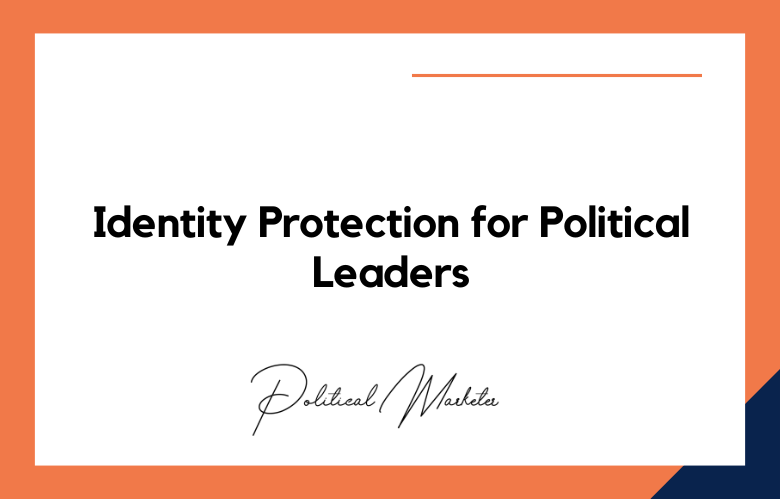It’s no secret that video marketing is one of the most powerful tools a business can use to reach its customers. But what many people don’t realize is that video marketing is also incredibly effective for political campaigns.
Video has become one of the essential tools for campaigns to reach and engage voters. Let’s look at why video is so powerful for political campaigns.
In a world where more and more people are getting their news online, it’s no surprise that political campaigns are turning to video marketing to reach potential voters.
Videos can be a very effective way of communicating a candidate’s message, and they can also help to humanize the campaign by showing voters who the candidates are.
Why is video marketing so powerful for political campaigns? We’ll also discuss some tips for creating successful political videos.
Video marketing is one of the most potent tools that political campaigns can use to reach voters. It allows candidates to share their message in a personal, engaging way that words on a page can’t consistently achieve.
In addition, video content is more likely to be shared online than any other type of content, so it can help campaigns get their message out to a broader audience. If you’re looking for ways to improve your political campaign, video marketing should be at the top of your list!
The benefits of using Video for Political Campaigns
- Video is one of the most potent forms of communication
- It builds trust and rapport with potential voters
- Videos can be easily shared on social media, increasing the reach
- They are a great way to humanize political candidates
- Videos communicate policy positions and stances on issues
- They can help boost fundraising efforts
- Video content is engaging and can help capture potential voters’ attention.
- Videos can be easily shared on social media, increasing the reach and potential for engagement.
- Videos allow candidates to share their personal stories and connect with voters more personally.
- Videos can be used as part of a larger online or offline campaign strategy
- Video is a great way to connect with voters and show them what you stand for
- It’s an engaging medium that can capture people’s attention and hold it for longer than text or static images
- Voters can see and hear you speak, which helps them get to know you better
- Videos can be easily shared on social media, increasing your reach
- They’re a great way to humanize your campaign and make yourself more relatable
- Voters are more likely to be influenced by videos than any other type of content
- Videos share a candidate’s story and vision for the future
- Videos attack an opponent’s record and policies
- Videos engage voters and encourage them to get involved in the campaign
- Video content is engaging and can help capture the attention span
- Videos shared on social media platforms
- Videos create a personal connection with potential voters
- Videos convey a message in a short amount of time
- Videos can be used as a tool to raise money for campaigns
- Voters are more likely to be influenced by a video than any other type of content
- Videos share a candidate’s story, policy positions, and more
- Videos create an emotional connection with voters that text or audio content cannot match
- Video is a powerful way to connect with voters
- It’s a great way to share your message and vision for the future
- They help build trust and credibility with voters
- Videos are a great way to humanize your campaign
- Video marketing is powerful because it allows people to connect with candidates on a personal level.
- Videos are easy to share, which helps to spread the message far and wide
- Videos create viral content that engages viewers and encourages them to share
- Videos help candidates stand out from the competition
- Videos target specific demographics for maximum impact
Types of Videos that can be used in a Political Campaign
Candidates can use all sorts of videos in their political campaigns, from traditional campaign commercials to more creative content like web videos and behind-the-scenes footage.
No matter what type of video a candidate chooses to use, it’s essential that the content is engaging and informative.
Videos can be a great way to connect with voters and get your message across.
Positive ads can showcase a candidate’s accomplishments, while attack ads can criticize an opponent. Other videos can include biographical ads, issue-based ads, and humorous ads. Ultimately, the footage used in a campaign depends on the candidate’s goals and the target audience.
Campaign ads are one type of video that reach voters. Another type of video that can be used in a political campaign is a biographical video about the candidate. This type of video tells the story of the candidate and why they are running for office. People want to know their candidates and what they stand for, so this video can be very effective.
Attack ad designs to make the opposing candidate look bad. Commercials are positive messages about the candidate. Web videos are usually short clips that post online.
A political campaign uses a variety of videos to engage voters. Movements can release ads, documentaries, and viral videos to discuss issues, share the candidate’s story, and inspire voters. These videos use online and on television to reach a broad audience.
- Traditional political ads are fed to voters through TV spots.
- Candidate appearances on morning talk shows.
- A web ad purchased from a viral video site like YouTube or Vimeo.
- Social media posts by the candidate or their campaign staff.
- News releases are sent to local, state, and national media outlets.
Candidates can release biographical videos that tell their stories and introduce themselves to the voters. Attack ads are another type of video that uses to criticize opponents. Negative campaigning can be effective, but it can also backfire if voters perceive it as unfair mudslinging.
There are a variety of videos that can be used in a political campaign. These include ads, debates, speeches, and interviews.
Each type of video has strengths and weaknesses, so choosing the suitable tape for the job is essential.
Ads are great for getting a candidate’s message out there, but they can be costly to produce.
Debates are a great way to showcase a candidate’s debating skills, but they can be unpredictable.
Interviews allow candidates to share their views in a more relaxed setting, but they can be harder to control than other types of videos.
How to create Videos that resonate with Voters
To create videos that will resonate with voters, start by understanding who your target voter is. What demographics and interests do they have? What issues are most important to them? Once you understand your target voter, craft a story that will resonate with them and produce engaging content that speaks to their interests.
Here are some points to create videos that will resonate with voters:
Find out what issues matter to them. What are the hopes and fears? Speak to these issues in your videos.
Use emotion wisely. People make decisions based on how they feel, so tap into that. But be careful not to manipulate.
Be authentic. People spot inauthenticity from a mile away. So be genuine, honest, and true to yourself and your message.
To create videos that resonate with voters, you must first understand. What are their concerns? What issues them passionately? Once you know this, you can start to create videos that address those issues and show how your candidate is the best choice to represent them.
Tips for distributing your Political Campaign Videos Online
- Choose the right video hosting site
- Create a YouTube channel for your campaign
- Upload videos to your channel
- Write compelling titles and descriptions for your videos
- Tag your videos with the right keywords
- Share your videos on social media websites
- embed your videos on your campaign website
- Monitor how well your videos are performing
- Choose the right video hosting site
- Make a good impression with your videos
- Keep your videos short and sweet
- Use keywords in your titles and descriptions
- Share your videos on social media
- Embed your videos on your website
- Create a YouTube channel for your campaign
- Make a website specifically for your campaign videos
- Upload your videos to YouTube and other video-sharing sites
- Embed your videos on your website
- Share your videos on social media websites like Facebook and Twitter
- Send emails with links to your campaign videos
- Make sure your website is campaign-friendly and can easily host video content.
- Produce videos that are high quality, creative, and engaging
- Upload videos to popular video-sharing websites like YouTube and Vimeo
- Share links to your videos on social media websites like Facebook and Twitter
- Embed videos on your campaign website or blog
- Send emails with links to your videos to potential voters and supporters
- Create a dedicated channel for your campaign videos on YouTube
- Create a YouTube account specifically for your campaign
- Upload videos to your account as soon as possible after they create
- Write a good description for each video
- Add links to your website and social media pages in the description box
- Share your videos on Facebook, Twitter, and other social media platforms
- Monitor how well each video is performing and make changes accordingly
- Make a website specifically for your campaign videos
- Create a YouTube channel and post your videos there
- Embed your videos on your campaign website
- Share links to your videos on social media websites like Facebook and Twitter
- Submit your videos to video-sharing websites like Vimeo and Dailymotion
- Create a website specifically for your Political Campaign videos
- Upload your videos to popular video-sharing websites like YouTube and Vimeo
- Embed your videos on your campaign website
- Share your videos on social media websites like Facebook and Twitter
- Email links to your videos to friends and family members
- Print flyers with links to your videos and post them in public places
- Produce quality videos
- Upload your videos to YouTube and other video-sharing sites
- Share your videos with email lists and through social media channels
- Monitor the response to your videos and make changes as needed
- Make a website specifically for your campaign videos
- Create a YouTube channel and upload your videos there
- Embed your videos on your campaign website
- Share links to your videos on social media websites like Facebook and Twitter
- Email links to your videos to friends and family members
- Distribute flyers with links to your videos at political rallies and other events
- Make sure your videos are high quality and professional
- Create a YouTube channel for your campaign and upload all of your videos there
- Embed your videos on your website and blog
- Share your videos on social media platforms like Facebook, Twitter, and Instagram.
- Send out emails with links to your videos to potential voters
- Run ads on social media and websites that target likely voters
- Hold online town halls or Google Hangouts to answer questions from likely voters.
Conclusion
Video marketing is a potent tool for political campaigns. It allows candidates to connect with voters on a personal level, building trust and increasing the likelihood of being elected. Candidates who use video marketing also tend to have a higher rate of voter engagement than those who don’t.
Contact us today if you want help incorporating video into your next political campaign. We’d be happy to share our wealth of experience and help you win!
Why is Video Marketing So Powerful for Political Campaigns?: FAQs
What Is Video Marketing For Political Campaigns
Video marketing for political campaigns involves creating and sharing video content to promote candidates, communicate policies, and connect with voters across digital and traditional platforms.
Why Is Video Marketing Important In Political Campaigns
Video captures attention quickly, conveys emotion effectively, and helps candidates present their vision in a relatable and memorable way.
What Types Of Videos Work Best For Political Campaigns
Effective formats include candidate introductions, policy explainers, rally highlights, voter testimonials, and behind-the-scenes campaign footage.
How Can Video Marketing Influence Voter Behavior
Videos can humanize candidates, build trust, and deliver persuasive messages that resonate emotionally with voters, influencing opinions and decisions.
What Is The Ideal Length For Political Campaign Videos
Short videos of 30–60 seconds perform best for social media, while 2–3 minute videos are effective for detailed storytelling or policy explanations.
How Can Storytelling Be Used In Political Campaign Videos
Storytelling allows campaigns to share personal journeys, highlight community impact, and create narratives that inspire voter connection.
What Role Do Testimonials Play In Political Video Marketing
Testimonials from voters, community leaders, and volunteers serve as social proof, enhancing credibility and reinforcing campaign messages.
How Can Live Streaming Support Political Campaigns
Live streaming enables real-time interaction with voters, provides transparency, and allows candidates to address issues and questions directly.
What Are The Best Practices For Producing Political Campaign Videos
Best practices include clear messaging, professional visuals, high-quality audio, strong calls to action, and tailoring content to each platform.
How Can Short-Form Videos Be Used In Political Marketing
Short-form videos are ideal for quick updates, event promotions, or highlighting key talking points that can be easily shared on social platforms.
What Are The Key Elements Of An Effective Political Video
An impactful political video should have an engaging opening, emotional appeal, authentic delivery, and a clear call to action.
How Can Video Analytics Improve Political Campaigns
Analytics reveal which videos engage voters most, helping campaigns refine content strategies for better reach and effectiveness.
What Platforms Are Most Effective For Political Video Distribution
Platforms such as Facebook, Instagram, YouTube, TikTok, and Twitter are popular for reaching diverse voter demographics with video content.
How Can Captions And Subtitles Increase Video Engagement
Captions make content accessible to all audiences, allow for silent viewing, and improve engagement rates, especially on social media.
What Are The Common Mistakes In Political Video Production
Common mistakes include poor sound quality, lack of focus in messaging, overuse of jargon, and failing to adapt content for different platforms.
How Can Video Ads Be Used For Targeted Voter Outreach
Video ads can be targeted by location, demographics, or voter interests to reach specific audiences with personalized messages.
What Is The Role Of Emotions In Political Campaign Videos
Emotions such as hope, pride, or urgency can inspire action and create a lasting impression that influences voter decisions.
How Can Political Videos Be Optimized For Mobile Viewing
Optimizing for mobile includes using vertical formats, bold text, concise messaging, and ensuring fast loading speeds.
What Are The Legal And Ethical Considerations For Political Videos
Campaigns must follow election laws, disclose sponsorships, avoid false claims, and respect copyright and privacy regulations.
What Future Trends Are Emerging In Political Video Marketing
Emerging trends include AI-generated personalized videos, interactive video ads, immersive 360-degree storytelling, and greater use of short-form platforms.
One way to get in touch is by filling out our online form on this site or give us a call at
+91 9848321284. Let’s work together today!











